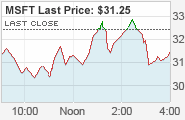Coverdell
Gain Tax Advantages
- Earnings on invested contributions in the account grow tax-deferred until withdrawn, which can help produce a greater total return over the long term.
- When you use the account assets for qualified education expenses, withdrawals (including earnings) are free from federal income tax.1, 2, 3
- The guardian of a Merrill Lynch Education Savings Account can generally transfer assets tax-free to an education savings account for another beneficiary who is a member of the family or substitute the beneficiary on an existing account.
- You may wish to do this if a child does not use all of the account assets or does not incur qualified education expenses. Assets in a Merrill Lynch Education Savings Account must be used before the beneficiary's 30th birthday
- An education savings account can be funded with contributions of up to $2,000 a year for each beneficiary who has not attained age 18 or is a special needs student.2,4 Annual contributions must be made by the tax-filing deadline (generally April 15th of the following year for an individual filing on a calendar year basis), not including extensions.
- There is no earned-income requirement for contributors. This makes it possible for anyone, including minor children or retired grandparents, to contribute to the account.
- The account assets may be used to pay for eligible education expenses at public, private and religious schools from kindergarten through 12th grade, as well as at colleges or post-secondary vocational schools. Eligible expenses include tuition, fees, books, required supplies and equipment, room and board and other requirements.
- The amount you may contribute to an education savings account declines based on your modified adjusted gross income. Your modified adjusted gross income must be less than $110,000 a year for an individual taxpayer or $220,000 for joint taxpayers to contribute to an education savings account.5




